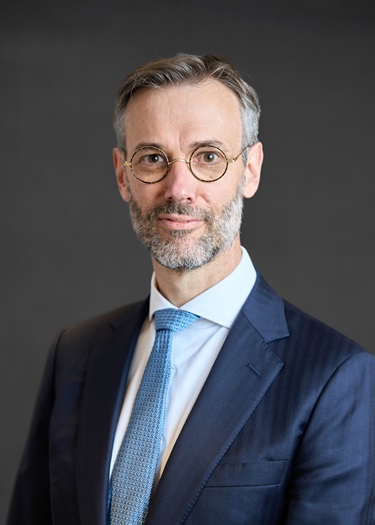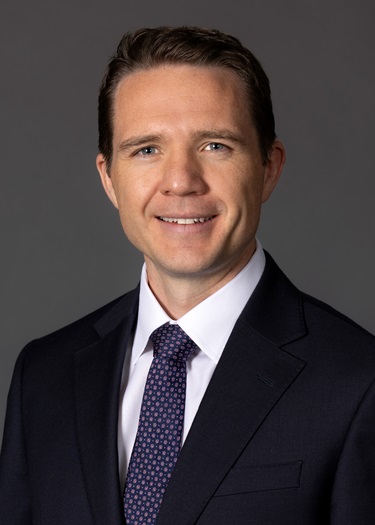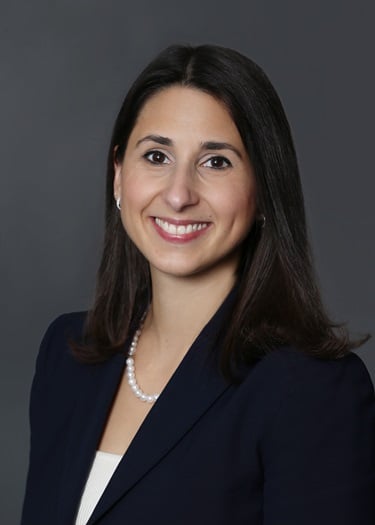Global Life Sciences Update
The European Commission Publishes its Pharma Review

Today, April 26, 2023, the European Commission (Commission) published its long-awaited Pharmaceutical Review (Review). In its press conference, the two Commissioners presenting the Review expressed pride at launching the biggest overhaul of European Union (EU) pharmaceutical law since 1965. The Commission’s stated aim is to achieve a balanced outcome with a “Triple A” (better access across the EU, affordability and availability of medicines), a “Triple C” (competitiveness of industry, improved compliance, and combating antimicrobial resistance (AMR)), and one “T” (more transparency). The aims were high.
However, industry sees a missed opportunity, because IP rights are substantially reduced overall, and their duration can be prolonged only by mechanisms that are uncertain and complex. There was no analysis of how the Review affects the industry’s ability to develop innovative product to address unmet medical needs. The one new incentive (a transferable exclusivity voucher for new antimicrobials) is so restrictive that it might not be workable.
This alert summarizes the key changes and risks to be taken into account in the next few months, in which stakeholders will provide feedback to the Commission, the European Parliament, and Member States.
Aims of the Review
Since 2016, the Commission had been studying the major incentive schemes in EU pharmaceutical law: regulatory data protection (RDP), “market exclusivity” granted to orphan medicinal products (OMPs), and the prolongation of supplementary protection certificates (SPCs) as a reward for conducting paediatric investigation plans (PIPs). The Commission found that even though the system generally worked, it did not result in sufficient products for unmet medical needs (in particular orphan drugs and pediatrics). The Commission also found that investment was not focused on products addressing high unmet needs. Furthermore, medicines are not launched across all of the EU. The availability of innovative medicines can be as high as 90% in Germany and as low as 10% in some Eastern European countries, and launches can take place years apart.
Overall approach
The Commission decided to tackle all these challenges (and more) in a comprehensive review of the four main EU pharmaceutical law instruments: the main Medicinal Products Directive 2001/83, the main Medicinal Products Regulation 726/2004, the OMP Regulation (141/2000), and the Paediatric Regulation (1901/2006). The basic idea of the Review is that by replacing the current “blanket” incentives and rewards with “conditional” incentives and rewards (e.g., for launching a product in all Member States), the EU can stimulate the availability of products in all Member States and redirect investment toward “unmet medical needs” products. To assuage concerns about high prices, the Review contains measures to ensure that generic and biosimilar medicines can launch on Day 1 after the expiry of exclusivity (patent, SPC, or market exclusivity). To combat AMR, the Commission presents a recommendation for Member State action plans.
Conditional incentives
The main measure proposed in the Review is to reduce the period of RDP (i.e., the time that must pass before generic and biosimilar applicants can submit their follow-on applications) from eight to six years. That across-the-board reduction can be prolonged in four cases:
- launching the product in all EU Member States (an extra two years)
- where the product addresses an “unmet medical need” (an extra six months)
- conducting comparative trials with comparator products (an extra six months)
- developing a new therapeutic indication with “significant clinical benefit in comparison with existing therapies” (this is an option already included in current law and gives right to one extra year)
On paper, therefore, the new system allows slightly longer RDP in comparison to the current system, which is based on eight years of RDP with one year for new therapeutic indications.
However, each of the prolongation mechanisms is uncertain and complex, and therefore it is uncertain whether companies can assume any RDP beyond six years when they start developing a product. The Commission declined to indicate the expected eligibility for the prolongations.
- A launch in all Member States will be difficult to achieve because each Member State must declare that the products are “released and continuously supplied into the supply chain in a sufficient quantity and in the presentations necessary to cover the needs of the patients.” Those quantities and needs might not be easy to determine. Furthermore, if such a launch requires reimbursement, it looks like an impossible task under current Member States’ practices and procedures. Moreover, every Member State will effectively get a veto. Therefore, a major increase in negotiation power of Member States appears likely, especially for the last outstanding Member States.
- Addressing “unmet medical needs” will be difficult, too. The concept is very narrowly defined, requiring a meaningful reduction of “high morbidity or mortality.” This potentially leaves out a significant number of conditions with an actual unmet need. Furthermore, if a product does not get the “unmet medical needs” qualification, it could have negative repercussions in reimbursement negotiations, which could cause further delays, endangering prolongation mechanism (a).
- For comparative trials, it is not clear whether a “relevant and evidence-based comparator” would be available.
To combat antimicrobial resistance, the Review provides for a “voucher” of one year of RDP for developing a new antimicrobial. This voucher can be used by the developer or sold (once) to another company. However, the conditions are so strict as to appear unworkable, and, on the basis of the numbers in the Commission’s Impact Assessment, the amount potentially to be raised will be about a third of the €1 billion needed to develop one new antimicrobial.
Orphan medicinal products
OMPs currently get a 10-year period of market exclusivity (the time that must pass before a generic or biosimilar application can be accepted). This period is prolonged in practice by the time it takes to process the generic or biosimilar application (often a year or more).
That system would be replaced by a “global orphan exclusivity” system, which provides for a reduced baseline orphan market exclusivity of nine years. Generic and biosimilar applications can be submitted two years earlier. This period of nine years can be prolonged
- by one year for products addressing a “high unmet medical need”
- by an additional one year for launching the product in all EU Member States
- by an additional one year for up to two more new therapeutic indications for a different orphan condition (an option already included in current EU law)
There can be only one period of market exclusivity per active substance, even if it is covered by two or more separate marketing authorizations, meaning that an RDP would not be awarded. Orphan medicinal products authorized under the well-established medicinal use pathway will benefit from only a five-year market exclusivity period.
Therefore, for subsequent orphan indications, this represents a de facto reduction of exclusivity from 10 years to one year. This seems contrary to the stated aim of increasing research in areas of unmet medical need.
Other measures and risks
The Review also contains positive changes. The number of EMA committees will be reduced; procedures will be streamlined and speeded up. For example, some PIPs can be determined and/or presented in stages, which is positive.
The Review contains several provisions that could increase risks for investors, and affect the risk-adjusted net present value of new medicinal products.
Strict new rules on shortages are included in the Review, with increased obligations to notify authorities of expected shortages, and shortage prevention plans. For a list of “critical medicines,” the EU will get powers to order contingency stocks.
The ability to obtain waivers for PIPs will be reduced. If a condition or disease does not occur in children, the EU can require a so-called “mechanism of action” PIP if there is evidence the product could work in unrelated paediatric conditions. And if a product has achieved a new pediatric indication, it must be launched in all Member States where the “adult indication” is marketed. This could expose products to new rounds of reimbursement negotiations.
There are new provisions allowing “pharmacy compounding”: the production of unlicensed medicines in pharmacies, without a marketing authorization or manufacturing authorization. Such compounding, which can replace innovative products, is foreseen for weekly hospital supplies. For advanced therapy medicinal products, the Commission is empowered to adopt procedures for preparation “on a non-routine basis.” This increases the existing risk of large-scale replacement of authorized drugs by replacement compounding.
Last, there is an entirely new set of environmental risk assessment (ERA) provisions, to be complied with at the time of marketing authorisation (MA) and even afterward. ERA deficiencies, such as an incomplete or insufficiently substantiated ERA, could result in an MA being refused or not being maintained. This would require substantial changes in the regulatory processes of applicants.
Lack of substantiation
The Commission’s own Regulatory Scrutiny Board twice asked the Commission to provide more analysis of how the proposed overall reduction of incentives and rewards (with conditional extensions) could affect the EU industry’s ability to innovate. This analysis does not appear to have been done, however. In particular, there was no analysis on how the IP reductions, and the uncertainties associated with the conditional prolongations, could affect the business case for new products.
Attorney Advertising—Sidley Austin LLP is a global law firm. Our addresses and contact information can be found at www.sidley.com/en/locations/offices.
Sidley provides this information as a service to clients and other friends for educational purposes only. It should not be construed or relied on as legal advice or to create a lawyer-client relationship. Readers should not act upon this information without seeking advice from professional advisers. Sidley and Sidley Austin refer to Sidley Austin LLP and affiliated partnerships as explained at www.sidley.com/disclaimer.
© Sidley Austin LLP
Contacts
Offices
Related Blogs
Capabilities
- Stay Up To DateSubscribe to Sidley Publications
- Follow Sidley on Social MediaSocial Media Directory


